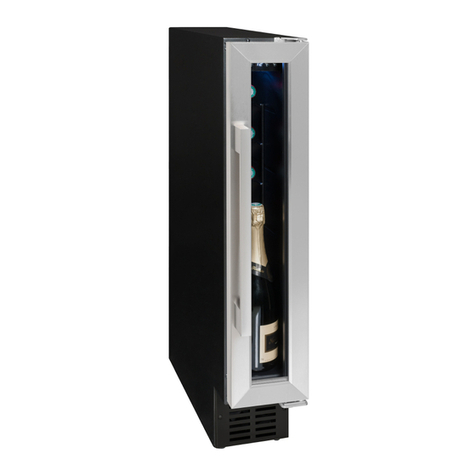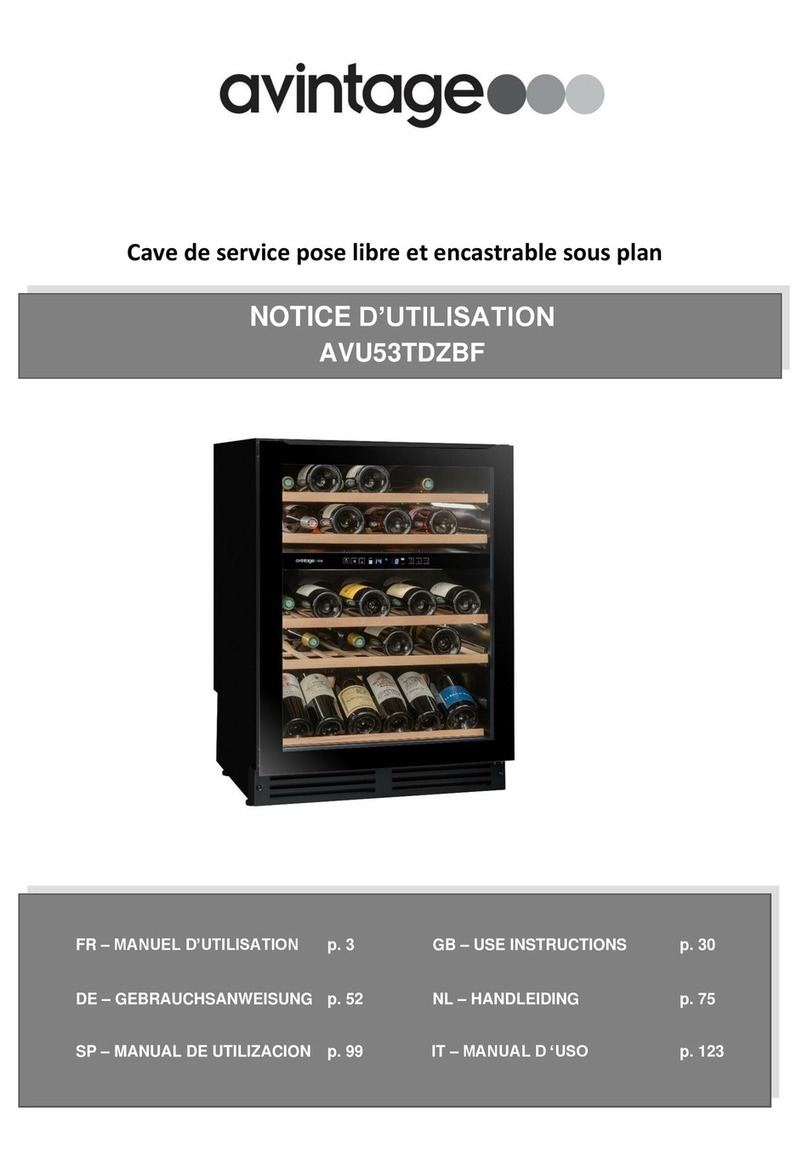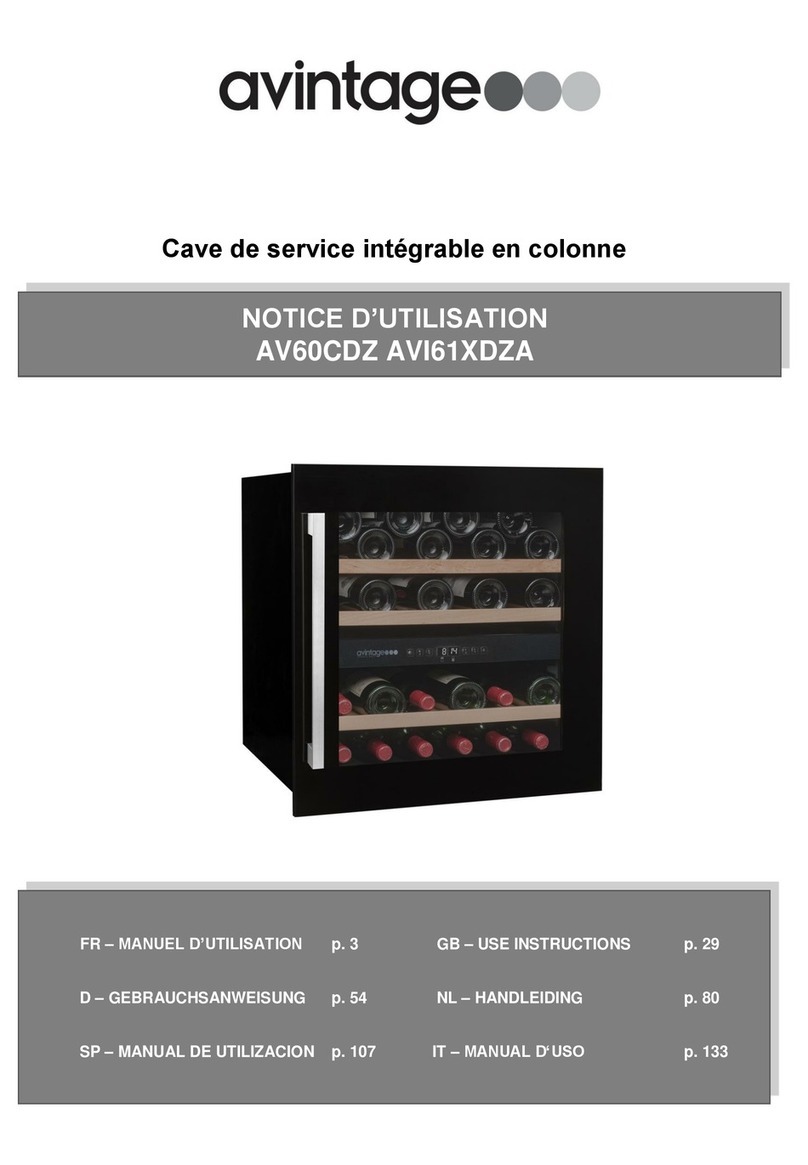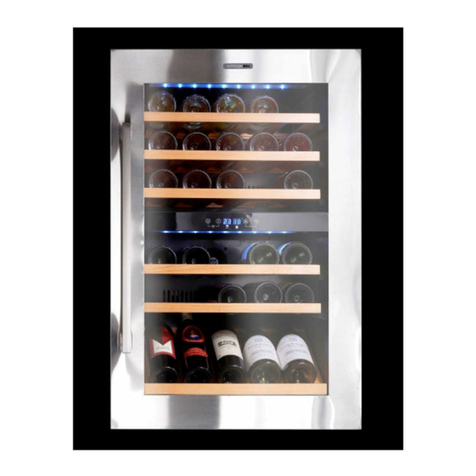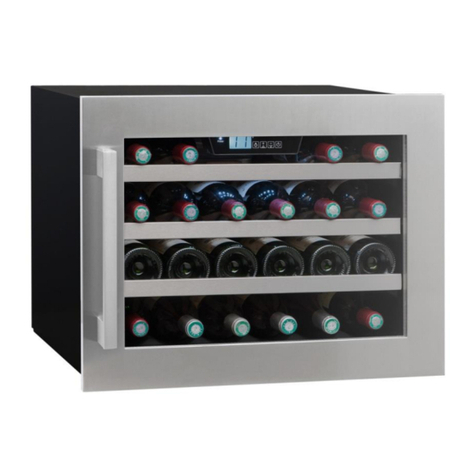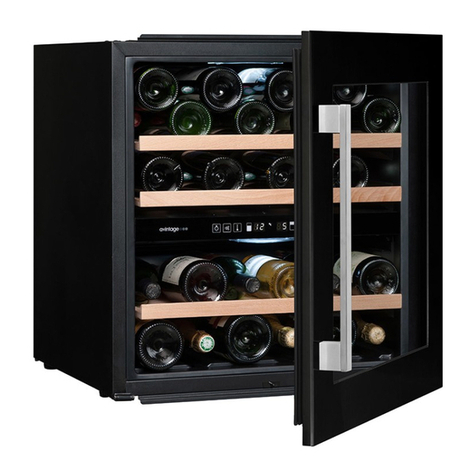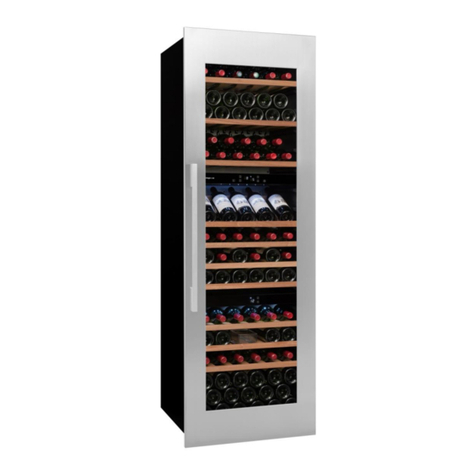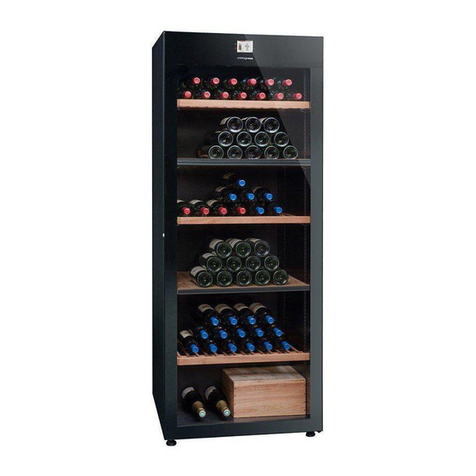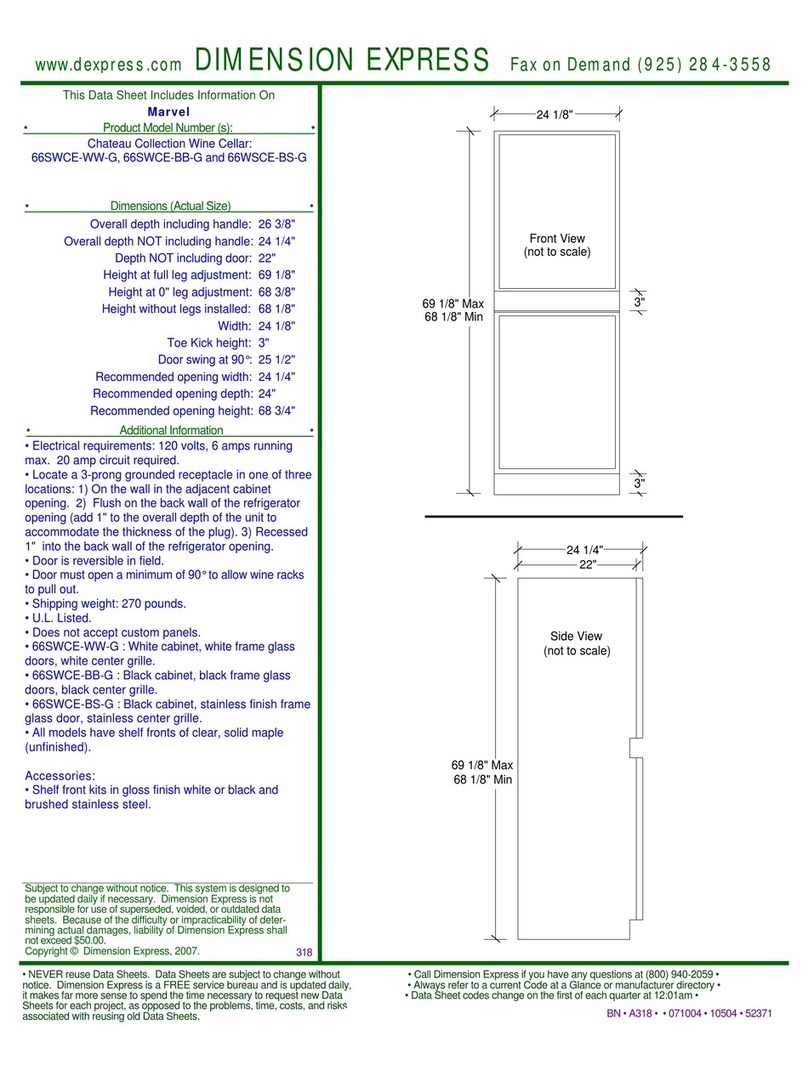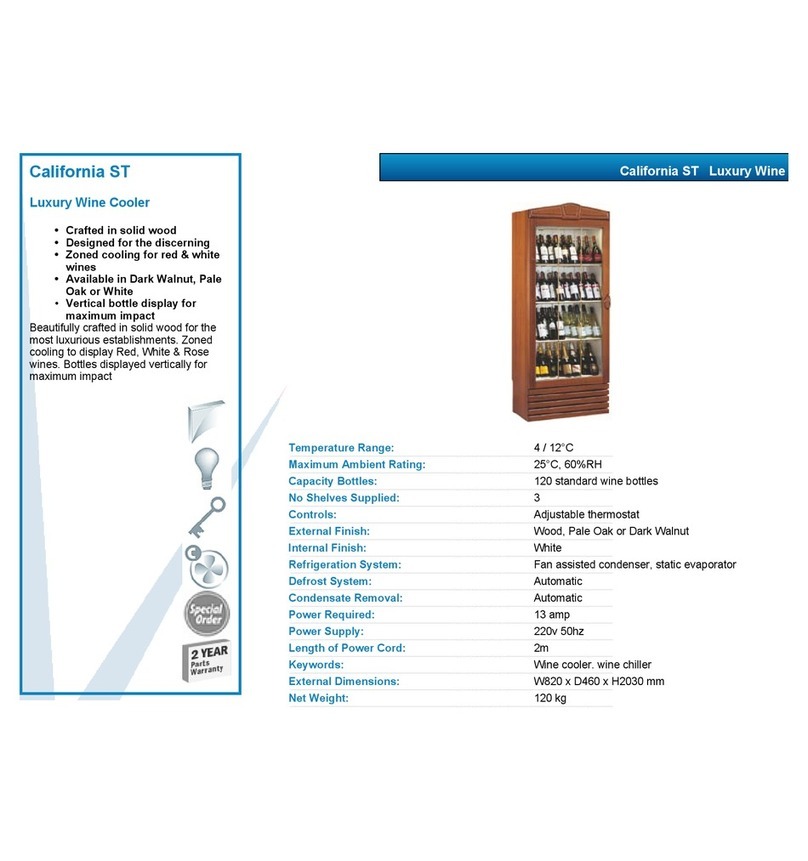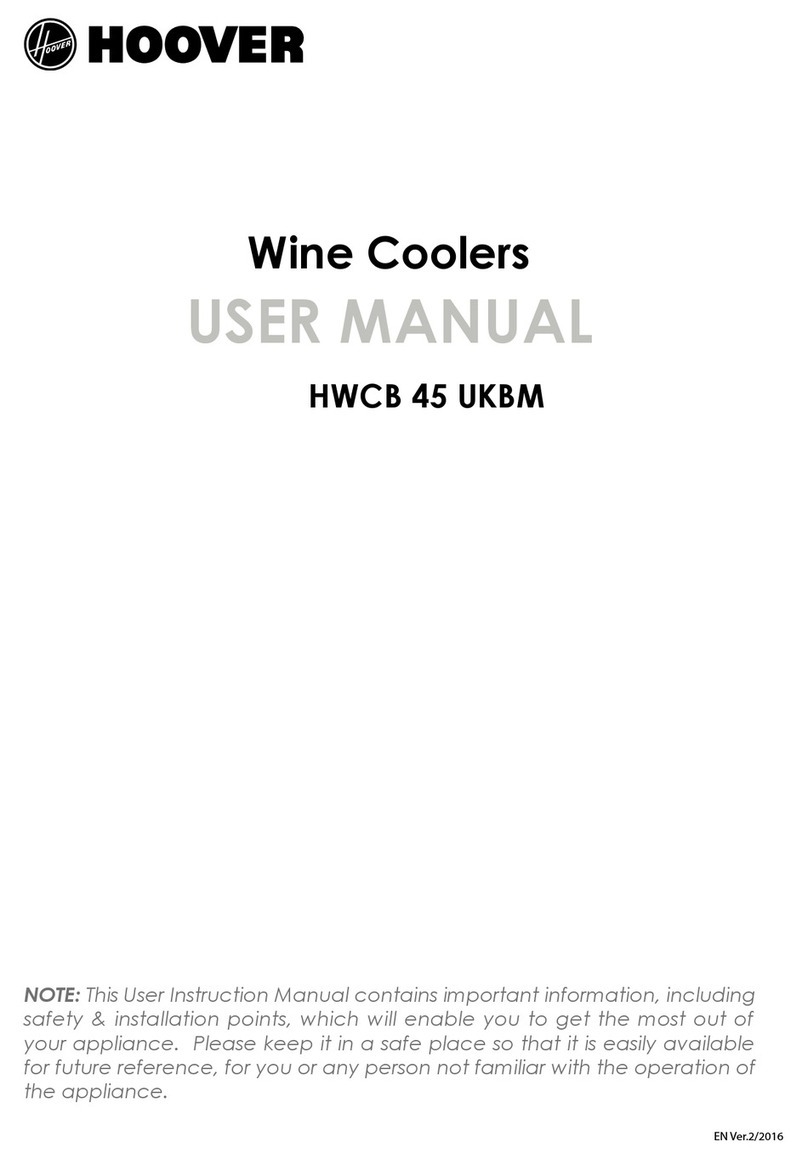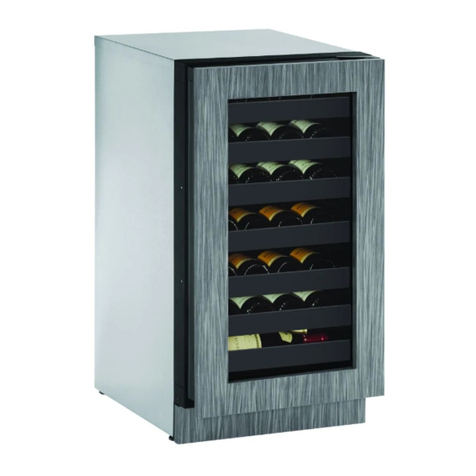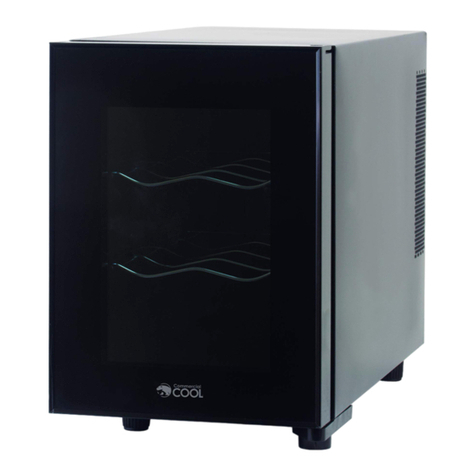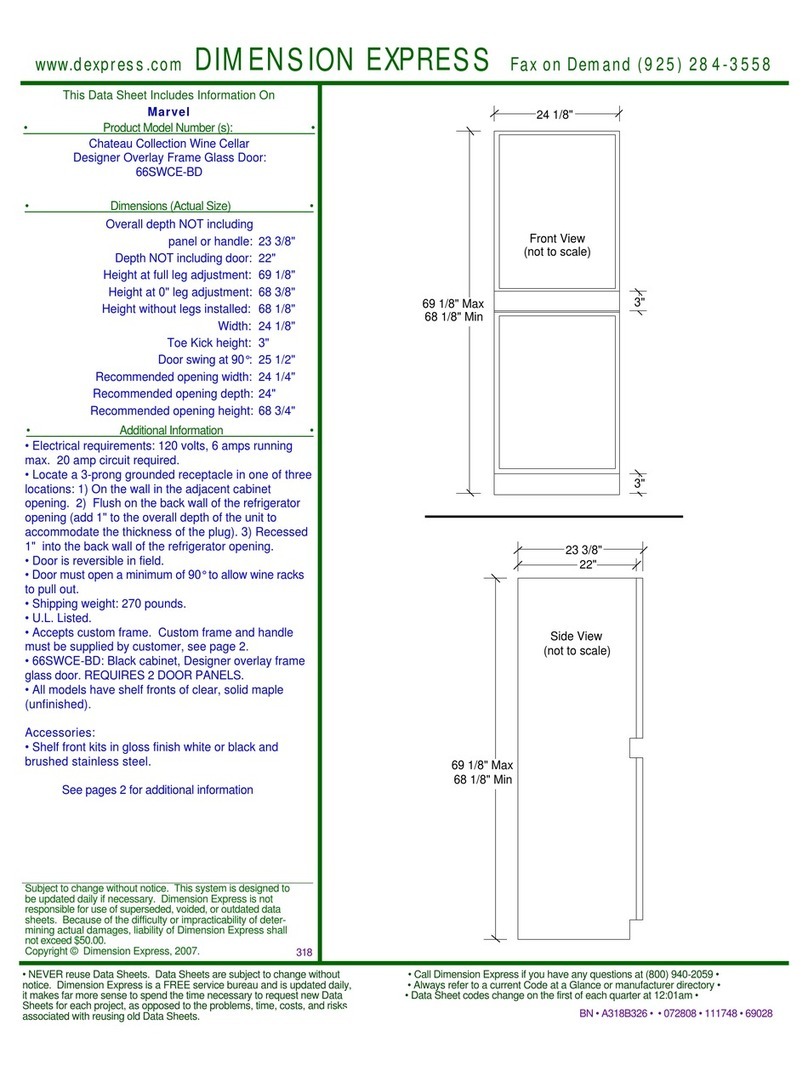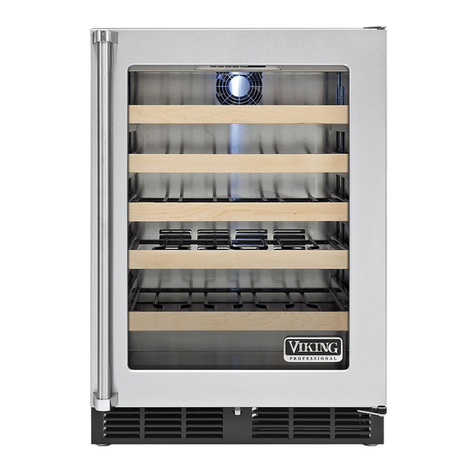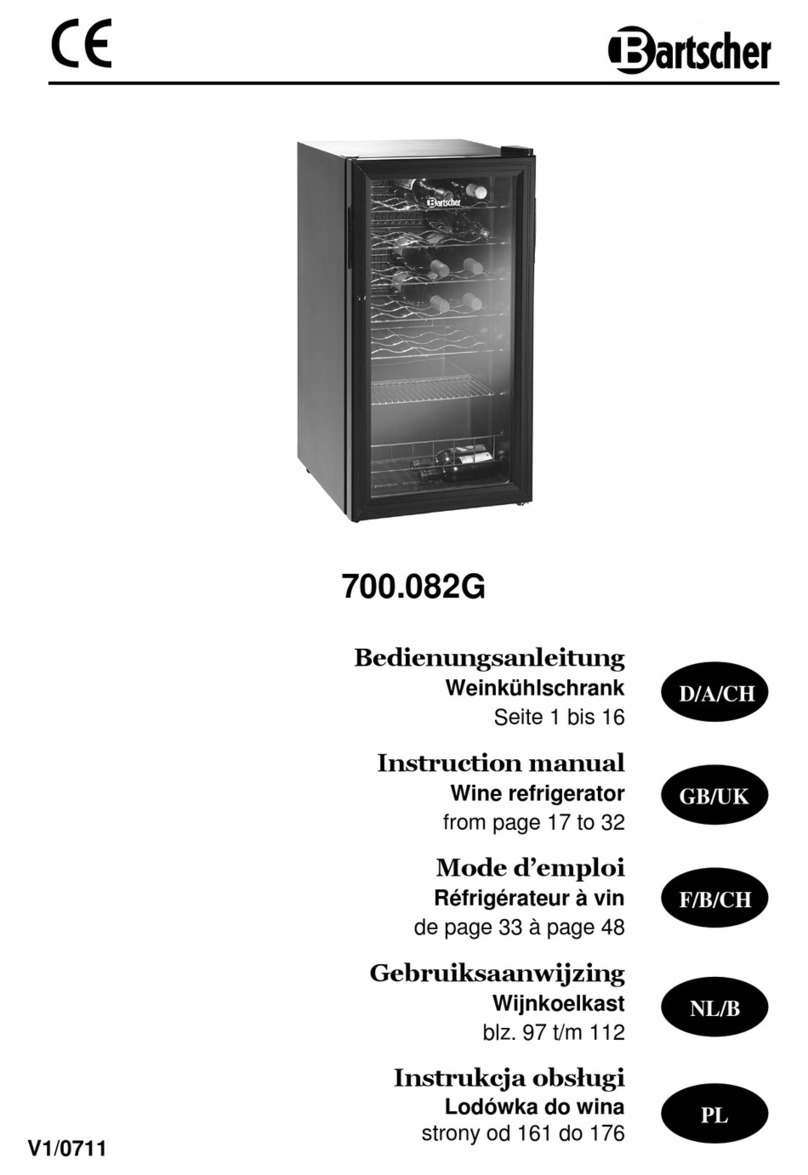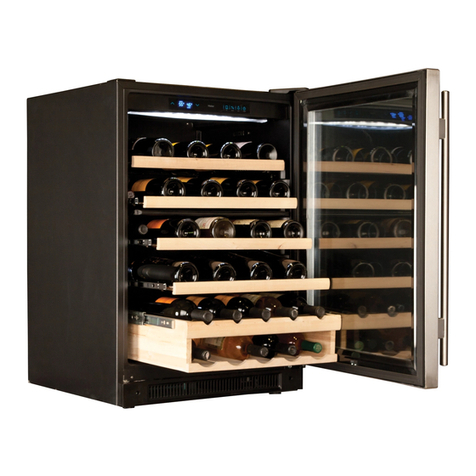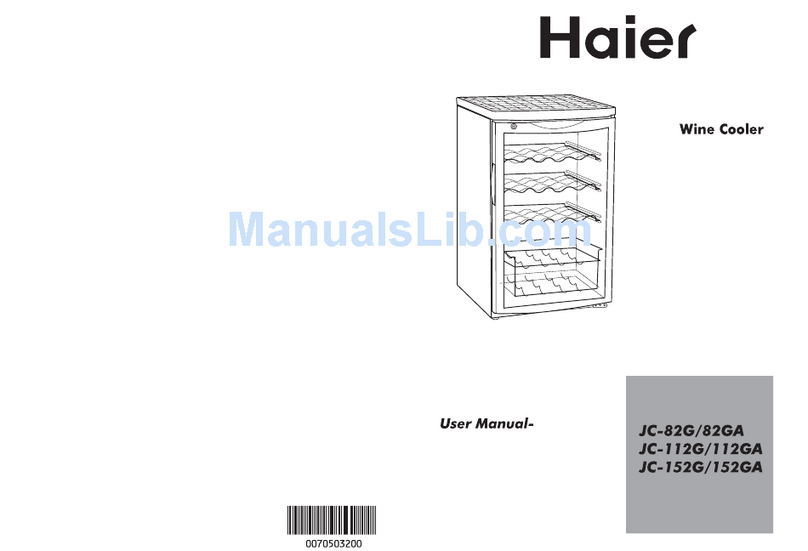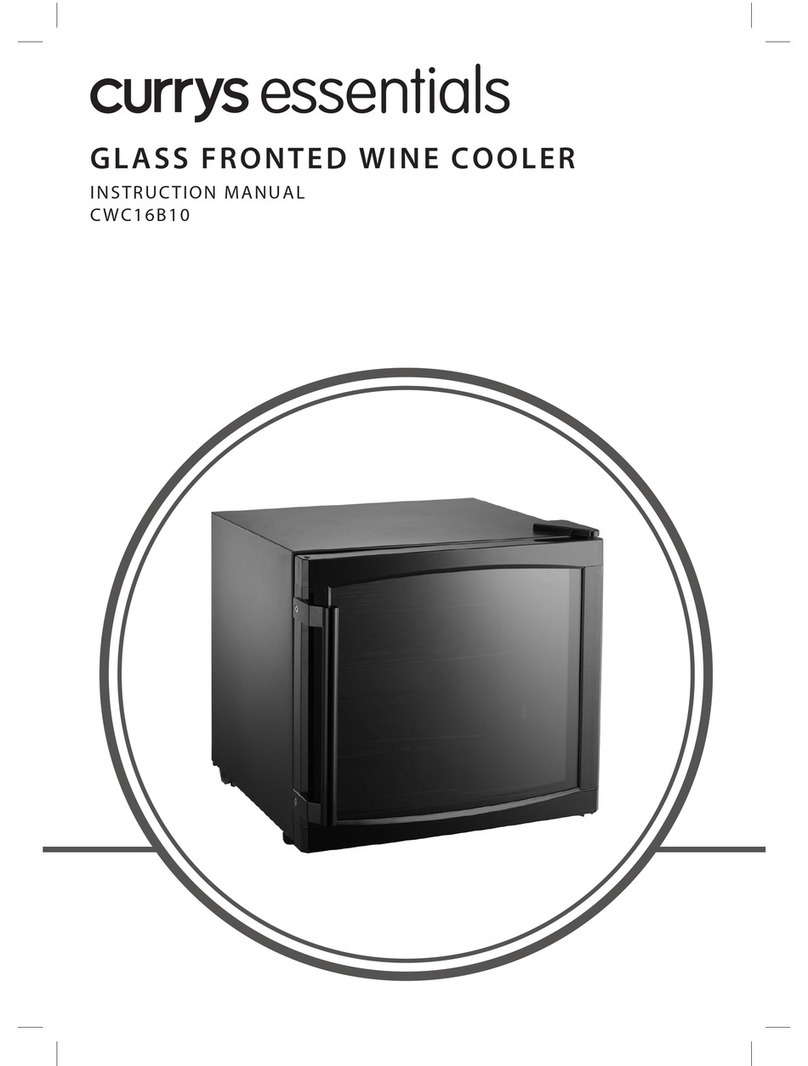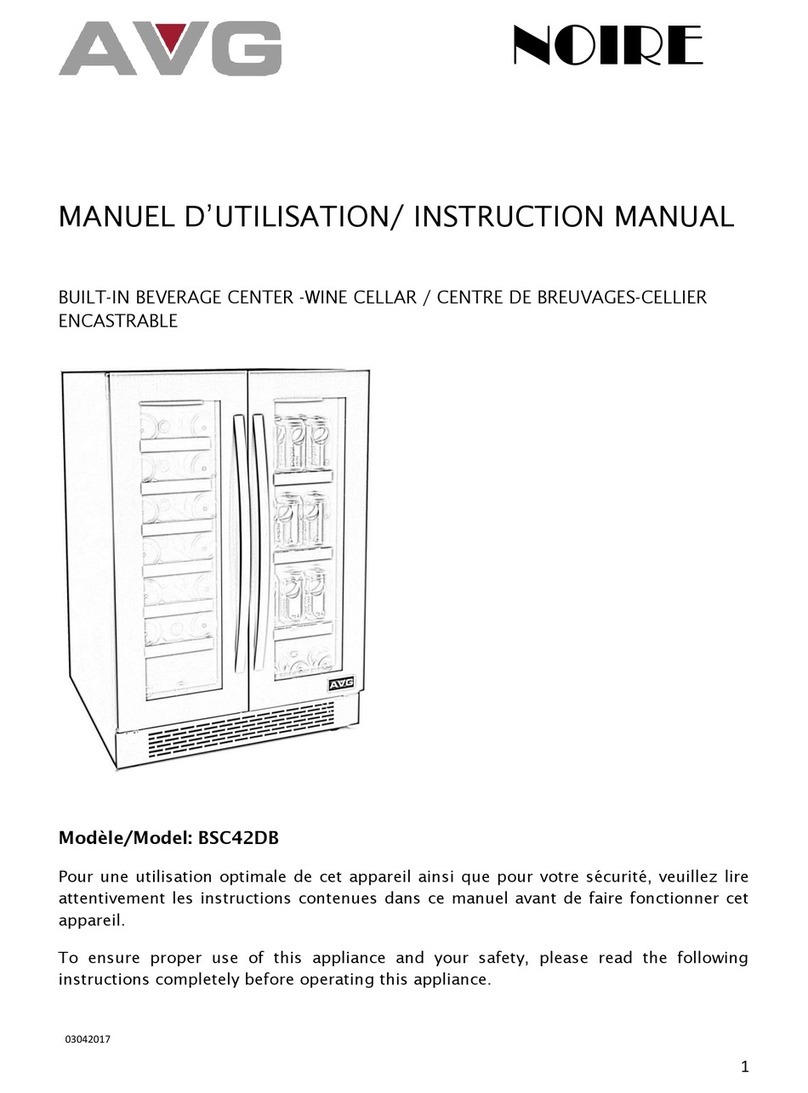
In fact, one could store more bottles by stacking a single type of bottle and without shelves. But a “varied” cabinet is made up
of a large variety of bottles and the “practical” side of the daily use of a cabinet limits the number of bottles stored. Most
probably, a few less bottles will be stored than the indicatedamount.
For example, if the cellar is filled only with bottles of burgundy, there will be approximately 30% fewer bottles than the initial
quantity calculated for Bordeaux
Any added shelf will decrease the loading capacity.
EXAMPLES OF SERVING TEMPERATURES
(TO BE COMPLIED WITH WHEN TASTING YOUR WINES!)
Opinions vary as does the ambient temperature but the general consensus is as follows:
Vintage Bordeaux - Reds 16 – 17°C
Vintage Burgundy - Reds 15 – 16°C
Vintage dry white wines 14 – 16°C
Light, fruity, young reds 11 – 12°C
Rosés de Provence, early wines 10 – 12°C
Dry whites and regional red wines 10 – 12°C
Regional white wines 8 – 10°C
Champagnes 7 – 8°C
Sweet wines 6°C
DEFROST - CONDENSATION
The cabinetis equipped with an automatic defrostcycle.When thecoolingcycle isfinished, the refrigerated parts of the cabinet
are defrosted automatically. The water from the defrost is channelled into an evaporation tray which is located in the back of
the cabinet close to the compressor. The heat from the compressor then evaporates the water from the tray.
UPKEEP
Before cleaning the cabinet (this must be done regularly), disconnect it either by unplugging it or by removing the fuse.
It is suggested that before first use and then regularly, the cabinet be cleaned both inside and out (front,sides and on top) with
a mixture of warm water and gentle cleaning fluid. Rinse with water and let dry completely before reconnecting. Do not use
solvents or abrasive products.
Clean the shelves with a gentle detergent then dry with a soft dry cloth.
At the moment of the first use, some odours can persist. In this case, make functioning the appliance at the coldest
temperatures, empty, during a few hours. The cold will cancel all these possible odours.
WHAT TO DO IN CASE OF A POWER OUTAGE
Most power outages are resolved in a short time. An outage of 1 or 2 hours will not affect the temperatures in your cabinet. In
order to protect the wines during the outage, open the dooras little as possible. For outages that are verylong, take necessary
steps to protect the wine. In the event of a power interruption, the unit can remember the previous temperature settings, and
when the power is recovery, the cabinet temperature will go back the same setting temperature as power off.
























